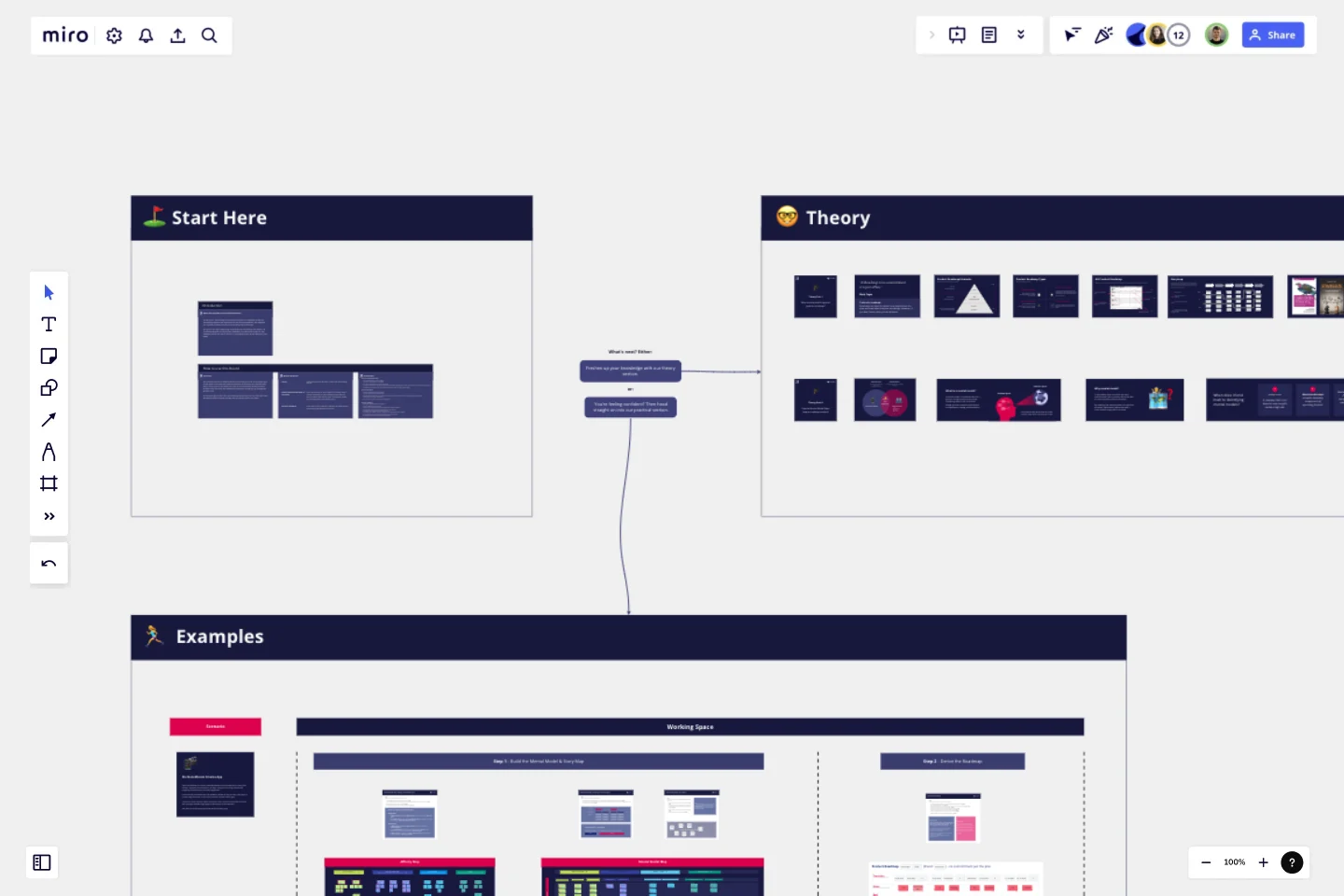User Centric Roadmap
User Centric Roadmaps are essential when developing a product. You will use it as the strategic plan of your product with high value because it is based on user insights.
This workshop template will help you understand what aspects are important to user centric roadmaps and how to actually build one. Copy this template, mentally walk through it, and schedule a meeting with your development team to prepare and plan the user interviews.
Procedure
Introduce yourself to the board using the "Start Here" Frame
Check out the Theory Board to gain knowledge on User centric roadmaps and why they are important (Optional)
Walk through the example to understand the process
Apply the process to your own features by using the templates (Modules)
Every template comes with moderation aids and a detailed explanation of how to use it.
This template was created by NanoGiants.
Get started with this template right now.
Product Roadmap by Isa Serpa
Works best for:
Roadmapping, Planning
The Product Roadmap Framework template provides a structured approach for visualizing product development initiatives. By outlining key features, timelines, and dependencies, teams can communicate their product strategy effectively. This template facilitates stakeholder alignment and supports informed decision-making throughout the development lifecycle. With a clear roadmap in place, teams can prioritize initiatives and deliver value to customers efficiently.
Backlog Refinement with Jira Template
Works best for:
Agile, Backlog Refinement
The Backlog Refinement with Jira template in Miro improves collaboration among team members. It provides a visual and interactive space for teams to review, prioritize, and clarify upcoming work items together in real time. This collaborative approach ensures alignment on priorities and details, leading to a more organized and efficient workflow. The seamless integration with Jira automatically syncs all changes, reducing the need for manual updates and keeping both platforms up-to-date.
RICE Prioritization Template
Works best for:
Project Management, Strategic Planning, Prioritization
Teams use the RICE framework to prioritize the best course of action for their business. Using the model, you assign a RICE score to different ideas and tasks. This score tells you whether that item is something to prioritize. As a result, you make better-informed decisions about growing your business.
UML Diagram Template
Works best for:
Diagrams, Software Development
Originally used as a modeling language in software engineering, UML has become a popular approach to application structures and documenting software. UML stands for Unified Modeling Language, and you can use it to model business processes and workflows. Like flowcharts, UML diagrams can provide your organization with a standardized method of mapping out step-by-step processes. They allow your team to easily view the relationships between systems and tasks. UML diagrams are an effective tool that can help you bring new employees up to speed, create documentation, organize your workplace and team, and streamline your projects.
Product Feature Presentation
Works best for:
Product Management, Planning
The Product Feature Presentation template aids product teams in showcasing product features and benefits effectively. By providing a structured framework for presenting key features, use cases, and value propositions, this template enables teams to communicate product functionality clearly and persuasively. With sections for creating feature demos, customer testimonials, and competitive differentiators, it facilitates engaging presentations that resonate with target audiences. This template serves as a powerful tool for driving product adoption and generating customer interest.
Agile Product Roadmap by Johanna Torstensson
Works best for:
Product roadmap
Streamline your product development with the Agile Product Roadmap template. Designed for agile teams, it helps you map out product features, set priorities, and track progress in an iterative way. Use it to align your team, manage backlogs, and adjust plans based on feedback and changing requirements. This roadmap is perfect for product managers, developers, and agile coaches aiming to deliver high-quality products efficiently and effectively.
